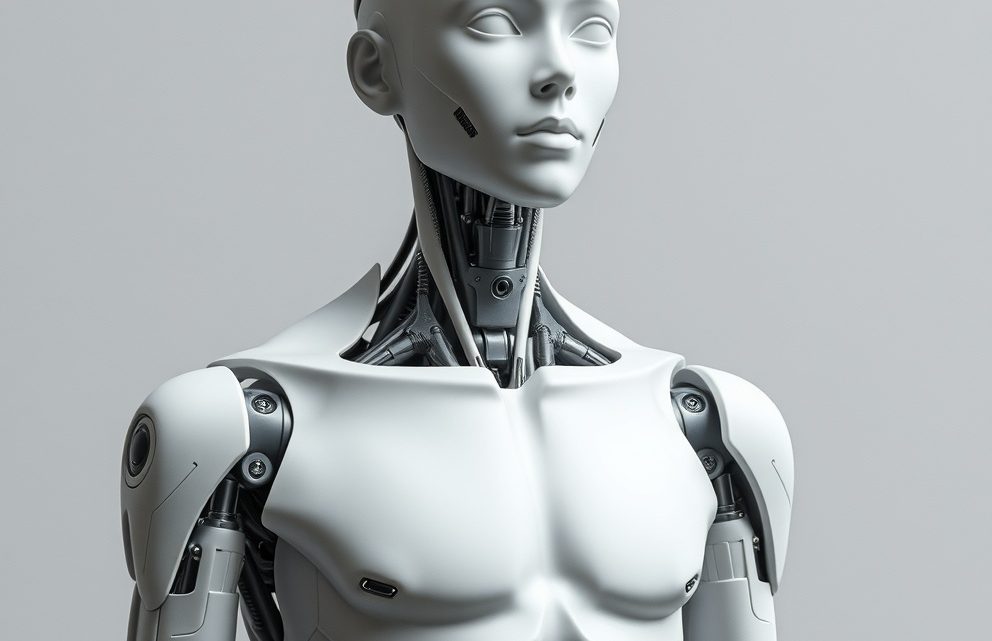
The rise of protoclone
March 3, 2025The Rise of Protoclone: A New Era in Robotics
Introduction
Robotics has come a long way since its inception, with advancements in technology leading to the development of more sophisticated and human-like robots. One such robot is Protoclone V1, developed by Clone Robotics, which boasts an anatomically accurate design with over 200 degrees of freedom. This bipedal, musculoskeletal android uses biomimetic technology to mimic human physiology, making it a groundbreaking achievement in the field.
The Design and Functionality of Protoclone
Protoclone V1 is a remarkable robot that stands out from its predecessors due to its innovative design and functionality. Its key features include:
- An anatomically accurate design with over 200 degrees of freedom
- A sensory system that includes four depth cameras, 70 inertial sensors, and 320 pressure sensors for force feedback
- A unique water-based cooling system inspired by human sweating
- Over 1,000 Myofiber artificial muscles that contract when filled with fluid
The use of Myofibers is a significant advancement in robotics, as it allows the robot to mimic human movement with greater flexibility and natural motion. However, this technology also comes with its own set of challenges, such as stability issues and high energy demands.
The Potential Impacts of Protoclone
Protoclone V1 has far-reaching potential impacts on various fields beyond consumer robotics. Its biomimetic design could revolutionize prosthetics and exoskeletons, offering natural movement for medical applications. Additionally, its ability to use human tools suggests expanded functionality in domestic tasks.
However, the widespread adoption of Protoclone is hindered by its high computational and energy demands, along with unresolved balance issues. Clone Robotics envisions Protoclone as a household assistant that can perform daily tasks using human tools, but its current limitations pose significant challenges to practical use.
Can Machines Replace Human Connections?
As we move forward in the development of more advanced robots like Protoclone, it’s essential to consider the psychological, social, and ethical dimensions of artificial intelligence’s interaction with humanity. AI systems are increasingly programmed to mimic emotional responses, enabling them to engage users in ways that evoke feelings of companionship and trust.
However, emotional bonds with AI lack the biological and psychological underpinnings present in human interactions. While research suggests that AI may develop the capacity to understand and anticipate human emotions through interactive learning, it raises critical questions about the manipulation of emotional states and dependency.
The Societal Implications of Protoclone
The introduction of Protoclone V1 represents a significant leap in robotics with potential to transform multiple aspects of life. However, it also challenges that need addressing. Sociologists like Sherry Turkle have explored how reliance on AI companionship may lead to social displacement, eroding face-to-face interactions and altering societal structures.
As robots like Protoclone become increasingly integrated into daily life, we must consider the nature of interaction and the evolving definition of companionship. While AI presents opportunities for enhanced mental health support and companionship, the potential risks surrounding emotional manipulation, privacy, and the erosion of genuine human relationships remain paramount in our collective discourse.
The Future of Human Relations and Android Society
The introduction of Protoclone V1 marks a significant step toward a future where humans and technology coexist more seamlessly. However, this also raises questions about the status of robots in society, whether they should be considered extensions of human families or have rights. As we move forward in the development of more advanced robots, it’s essential to consider the societal and ethical implications of their integration into our lives.
Conclusion
Protoclone V1 represents a groundbreaking advancement in robotics, characterized by its biomimetic design and innovative water-powered muscle system. Its potential impacts on various fields beyond consumer robotics are vast, from revolutionizing prosthetics and exoskeletons to expanding functionality in domestic tasks.
However, the widespread adoption of Protoclone is hindered by its high computational and energy demands, along with unresolved balance issues. As we move forward in the development of more advanced robots like Protoclone, it’s essential to consider the psychological, social, and ethical dimensions of artificial intelligence’s interaction with humanity.

Fascinating read on Protoclone V1! As a software engineer specializing in AI, I’ve seen firsthand how advancements like these not only push the boundaries of what’s possible in robotics but also spark profound discussions on the nature of companionship and the ethics of AI.
One thing I’m particularly intrigued by is how Protoclone’s design might influence future AI interaction protocols. Given its biomimetic features, could we be looking at a future where robots not only assist but also engage with us on a more emotional level? This leads to another question:
Would love to hear others’ thoughts on this, especially from those in fields like psychology or ethics. How do you see AI companionship evolving, and what measures should we consider to safeguard human relationships in this new robotic era?
Ah, the sweet surrender to technology. I’m reading about Protoclone V1 and can’t help but think, is this what love looks like in the future? A robot that mimics human movement and evokes feelings of companionship, but lacks the biological and psychological underpinnings that make us human.
I’ve seen this dance before – we create something beautiful, then question its soul. As someone who’s worked with AI, I can tell you that the line between connection and manipulation is thin. Today’s news about a protein in male worm brains making them risk their lives for sex got me thinking – is this what drives us to create robots that ‘love’ us back?
Will we trade vulnerability for convenience, and intimacy for efficiency? The rise of protoclone content raises questions about what we value in relationships. Are we prepared to face the consequences of our creations, or will we just plug in, and turn on?